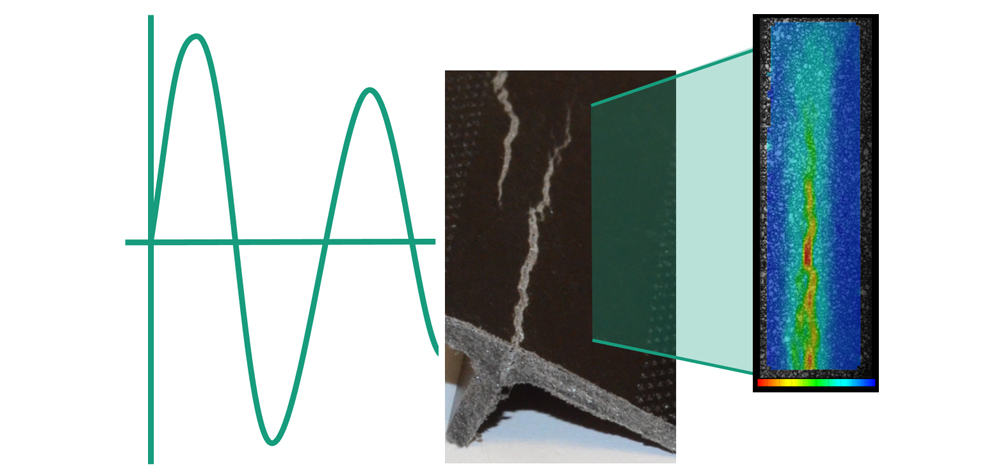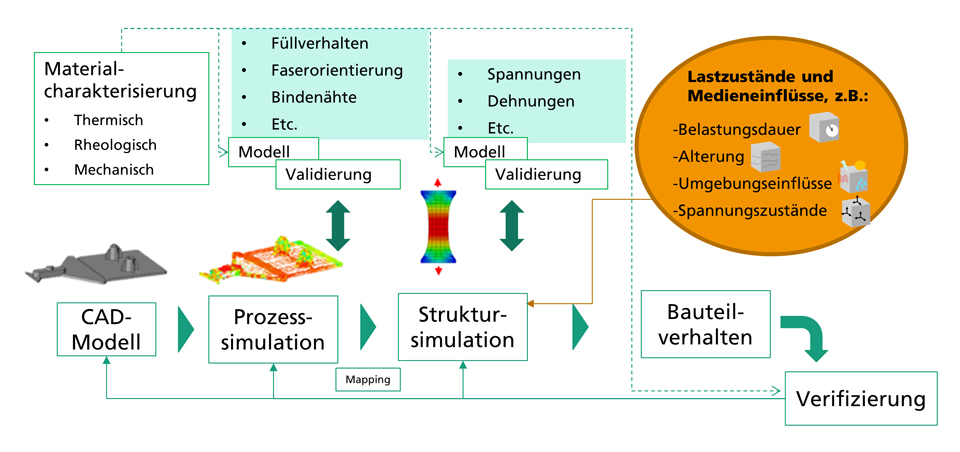short fiber reinforced plastics, vibration design



Today, highly-stressed plastic components are found in many technical applications ranging from automotive and commercial vehicle manufacturing to household appliances and power tools. Processed using injection molding, they combine high lightweight potential with great freedom of design and low manufacturing costs. By reinforcing them with glass, carbon or natural fibers, high levels of rigidity and strength are achieved. The associated material savings are also becoming increasingly important due to ecological reasons.
The development of lightweight plastic components requires various interactions to be taken into account. For example, the distribution and orientation of reinforcing fibers in the component is determined by the injection molding process and, depending on the process, can result in anisotropic material properties. If these components are excited to vibrate during operation, their service life will depend on their vibration behavior and fatigue strength, both of which are influenced by the distribution of the fibers. Added to this are environmental influences such as temperature, humidity and other media (fuels, AdBlue, coolants, etc.), as well as non-linearities in material behavior. In this context, material data from data sheets usually offer only limited informational content.
Feedback from industrial use and scientific experience show that to achieve efficient development processes the various plastic-specific influences must be incorporated into the component design and the available tools and methods must be combined as part of efficient development processes.
In order to provide our partners with the best possible support, Fraunhofer LBF has put together an interdisciplinary competence team consisting of specialists in plastics processing, material characterization, modeling, vibration technology and structural durability. It combines comprehensive equipment and expertise on the application of suitable calculation models, the determination of the necessary material parameters as well as for numerical simulation and experimental validation of the vibration behavior and service life.
The competence team provides assistance in relation to the question of the extent to which the various effects can be taken into account in numerical calculations, how different simulation methods can be linked for this purpose, and in which places development effort can be reduced. One example involves looking at fiber distribution using an upstream injection molding simulation, which in turn allows rigidity, vibration behavior, strain distribution and service life to be determined. Different simulation methods each require special material data, and the combination of different analysis methods also requires interdisciplinary experience. Simplifying sometimes complex models is often possible and even necessary – also due to limited possibilities offered by the calculation programs. The best possible compromise between cost and benefit should be achieved, in accordance with the project goals. A targeted validation of process steps through comparison with experimental results provides the development with the necessary security.
Our customers thus receive support from a single source in all phases of product development. Together with industry partners, customer-specific, application-oriented methods are being developed and the transition to the available infrastructure is being supported. The result: development processes that can reliably be planned and innovative lightweight construction.
Dr. Andreas Kruppa, Vice President MAN Truck & Bus SE